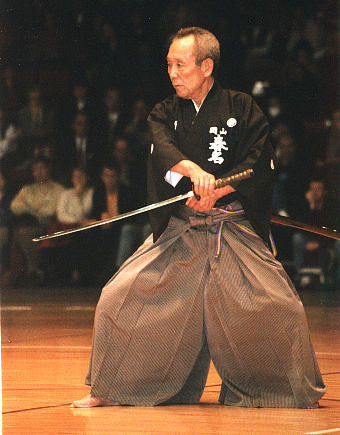Your Cart is Empty


Iaidō is a lesser known style of Japanese swordsmanship that focuses specifically on unsheathing and drawing a sword. Although it's been around for many decades, it hasn't received the attention of other styles of traditional Japanese swordsmanship, such as kenjutsu. Nonetheless, it has significant cultural value that reflects Japan's feudal period. In this post, we're going to reveal six fun facts about iaidō that you probably didn't know.
#1) Real Swords... But With a Blunt Edge
While there are exceptions, most iaidō practitioners perform this swordsmanship style of Japanese martial arts using a real sword with a metal blade. The blade, however, doesn't have a razor-sharp edge like traditional swords. Rather, it has a blunt edge to protect the practitioner from accidental self-injury.
#2) It's Performed Solo
Most forms of traditional Japanese martial arts involve two practitioners, each of whom attempts to strike his or her opponent to score points, and the practitioner with the most points at the end of the match wins. Iaidō is different, however, in the sense that it's performed solo. The practitioner stands in front of a crowd of judges and spectators while he or she performs sword-drawing techniques.
#3) The Term 'Iaidō' Originated in the 1930s
Iaidō has been around for decades, but the term "iaidō" is believed to have originated during the early 1930s. Back then, it became part of a Japanese phrase of "always being prepared." Today, the term "iaidō" is now used to describe the traditional Japanese martial art of unsheathing and drawing a sword.
#4) The Dan Ranking System
Like many other traditional Japanese martial arts, iaidō uses the dan ranking system. Pioneered by Hon'inbo Dosaku in the 15th century, the dan ranking system consists of ten levels, also known as ranks. Practitioners begin at the 1st dan, and as they improve their skill and proficiency in the craft, they achieve higher ranks, with the highest being the 10th dan.
#5) The European Kendo Federation Hosts Contests
Each year, the European Kendo Federation hosts iaidō contests. The contests started in 2000 and have occurred each subsequent year ever since. Practitioners from across the world often seek to participate in these annual, highly esteemed contests.
#6) Two Focuses
Iaidō has two primary focuses, the first of which is to maintain a high state of awareness. The other focus is to draw the sword in a quick and efficient manner so that the practitioner can respond to an incoming attack.